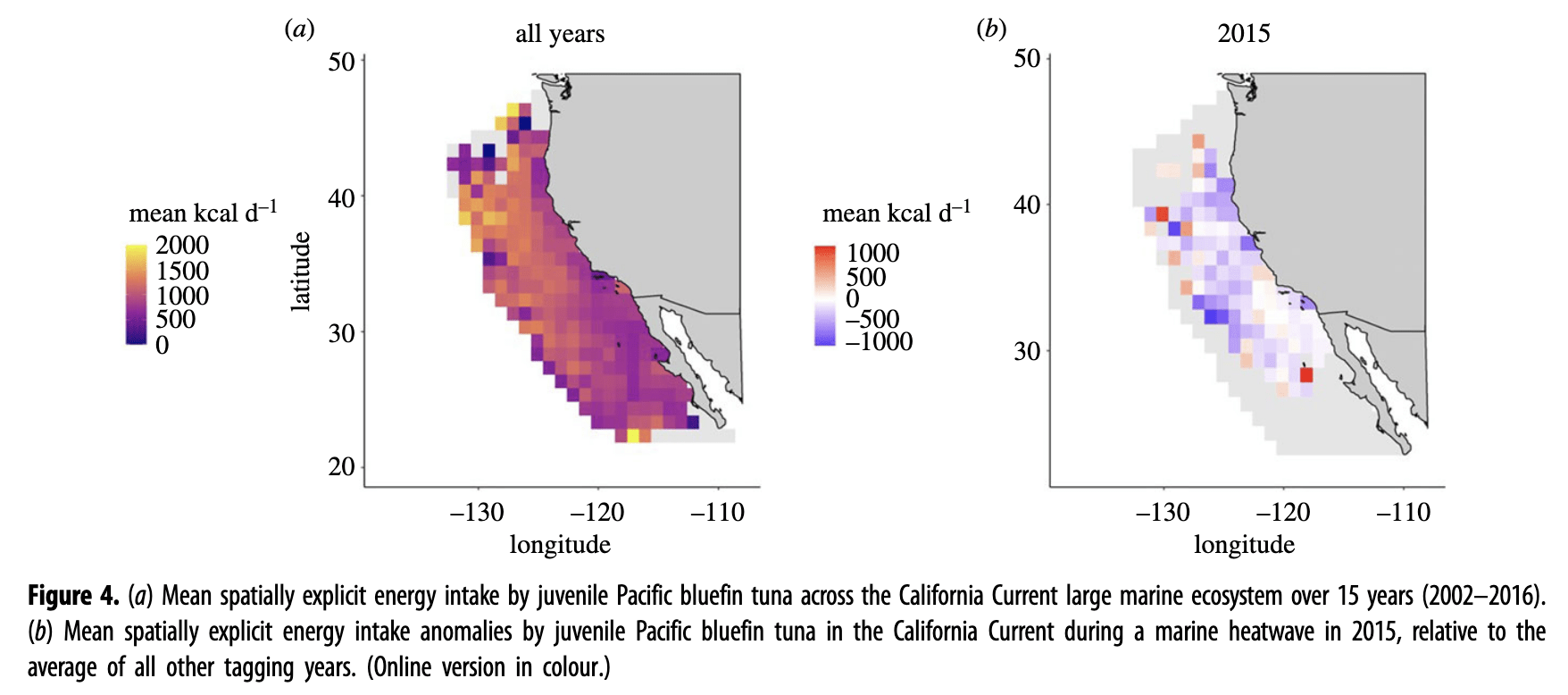Where do animals go is not always where animals find food. Using heat increment of feeding, which is the integrated energy from a gulp of food, we can look at not just where animals go but also where they have success in feeding. Shifting distributions in anomalous years may both optimize the physiology and the feeding of these iconic and threatened species.

Figure 4. (a) Mean spatially explicit energy intake by juvenile Pacific bluefin tuna across the California Current large marine ecosystem over 15 years (2002–2016). (b) Mean spatially explicit energy intake anomalies by juvenile Pacific bluefin tuna in the California Current during a marine heatwave in 2015, relative to the average of all other tagging years. (Online version in colour.)
Abstract: Animal migrations track predictable seasonal patterns of resource avail-
ability and suitable thermal habitat. As climate change alters this ‘energy
landscape’, some migratory species may struggle to adapt. We examined
how climate variability influences movements, thermal habitat selection
and energy intake by juvenile Pacific bluefin tuna (Thunnus orientalis)
during seasonal foraging migrations in the California Current. We tracked
242 tuna across 15 years (2002–2016) with high-resolution archival tags, esti-
mating their daily energy intake via abdominal warming associated with
digestion (the ‘heat increment of feeding’). The poleward extent of foraging
migrations was flexible in response to climate variability, allowing tuna to
track poleward displacements of thermal habitat where their standard
metabolic rates were minimized. During a marine heatwave that saw temp-
erature anomalies of up to +2.5°C in the California Current, spatially explicit
energy intake by tuna was approximately 15% lower than average. However,
by shifting their mean seasonal migration approximately 900 km poleward,
tuna remained in waters within their optimal temperature range and
increased their energy intake. Our findings illustrate how tradeoffs between
physiology and prey availability structure migration in a highly mobile
vertebrate, and suggest that flexible migration strategies can buffer animals
against energetic costs associated with climate variability and change.
Carroll, S. Brodie, R. Whitlock, J. Ganong, S. Bograd, E. Hazen, B.A. Block, 2021. Flexible use of a dynamic energy landscape buffers a marine predator against extreme climate variability. Proceedings of the Royal Society B. DOI: 10.1098/rspb.2021.0671. PDF
